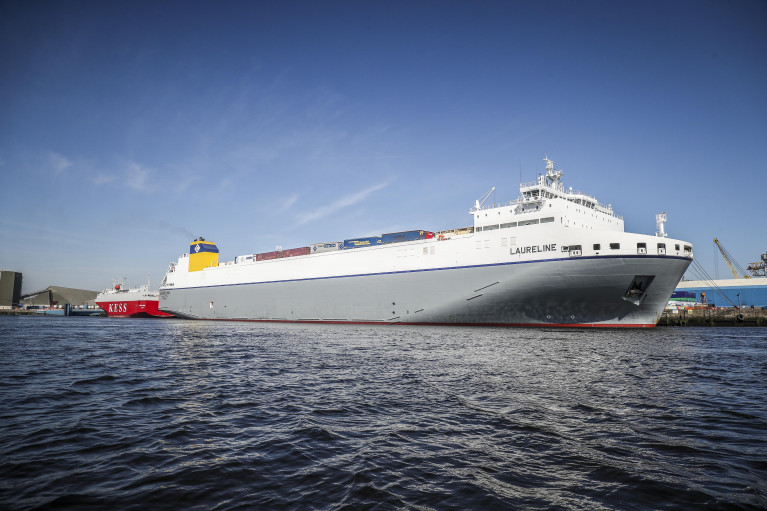Displaying items by tag: RoRo freight ferry
Port of Cork Welcomes New Route to Mainland Europe With Ro-Ro Service By CLdN this Friday
A new Port of Cork-mainland Europe service has been warmly welcomed with the announcement by CLdN Ro-Ro SA of a weekly ro-ro freight service between the Irish port and Zeebrugge in Belgium.
The new service, which begins operations this Friday (24 April), is part of a significant expansion by CLdN of its freight services between Belgium and the Republic of Ireland. (Afloat adds CLdN launched the 'Brexit-buster' ship Celine in 2018 followed by Laureline last year on the Dublin Port-Belgium/Netherlands services).
The Ro-Ro service will leave Zeebrugge on every Friday to arrive in Cork on Sunday. The ro-ro freight ship will return on Tuesday arriving in Zeebrugge again on every Thursday.
CEO of Port of Cork, Brendan Keating, said; “This announcement by CLdN will greatly support our efforts in the Port of Cork to keep supply chains moving during the current Covid-19 pandemic. The Port has been actively looking at ways to bolster its freight activity and is delighted to partner with a company that enjoys such a great reputation in the shipping industry. Introducing this new connectivity to Zeebrugge not only helps Port of Cork to protect supply chains during the current crisis, but also adds a direct freight-only link with the heart of Europe.”
Port of Cork Chairman, John Mullins, said; “This is a very exciting development for both the Port of Cork and CLdN. In these unprecedented times this direct freight link with Europe from Ireland’s primary southern gateway will reinforce the Port’s commitment to supporting businesses in the region and preparing for any eventuality Brexit may still bring.”
The Port of Cork has implemented a contingency plan to ensure freight operations continue as normal during the COVID-19 pandemic. The Port is a key facilitator of trade in the Munster region, and vital deliveries will continue to several sectors in the weeks ahead.






























































